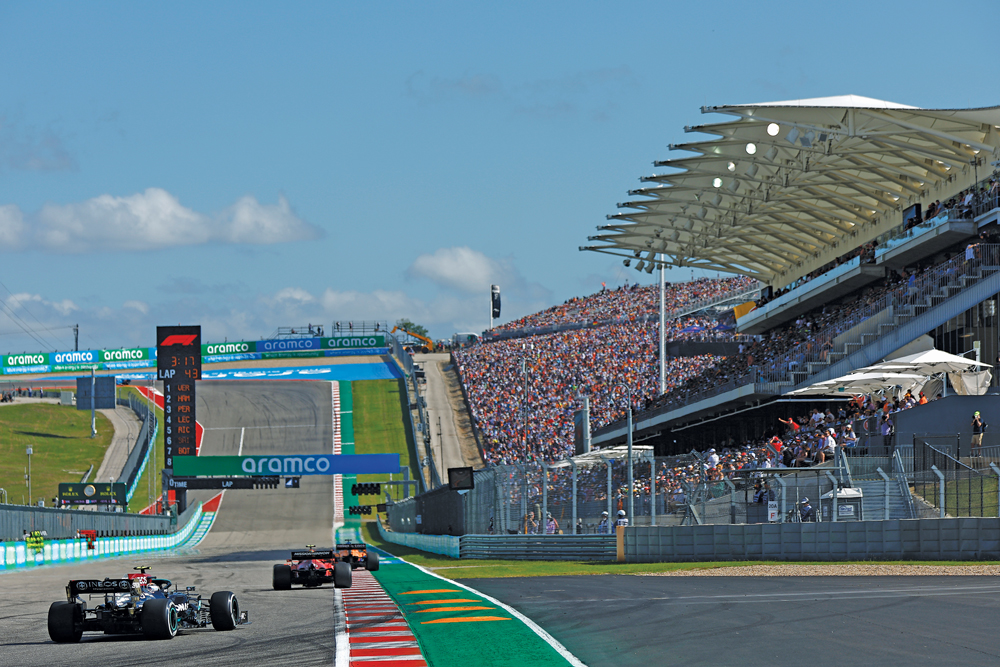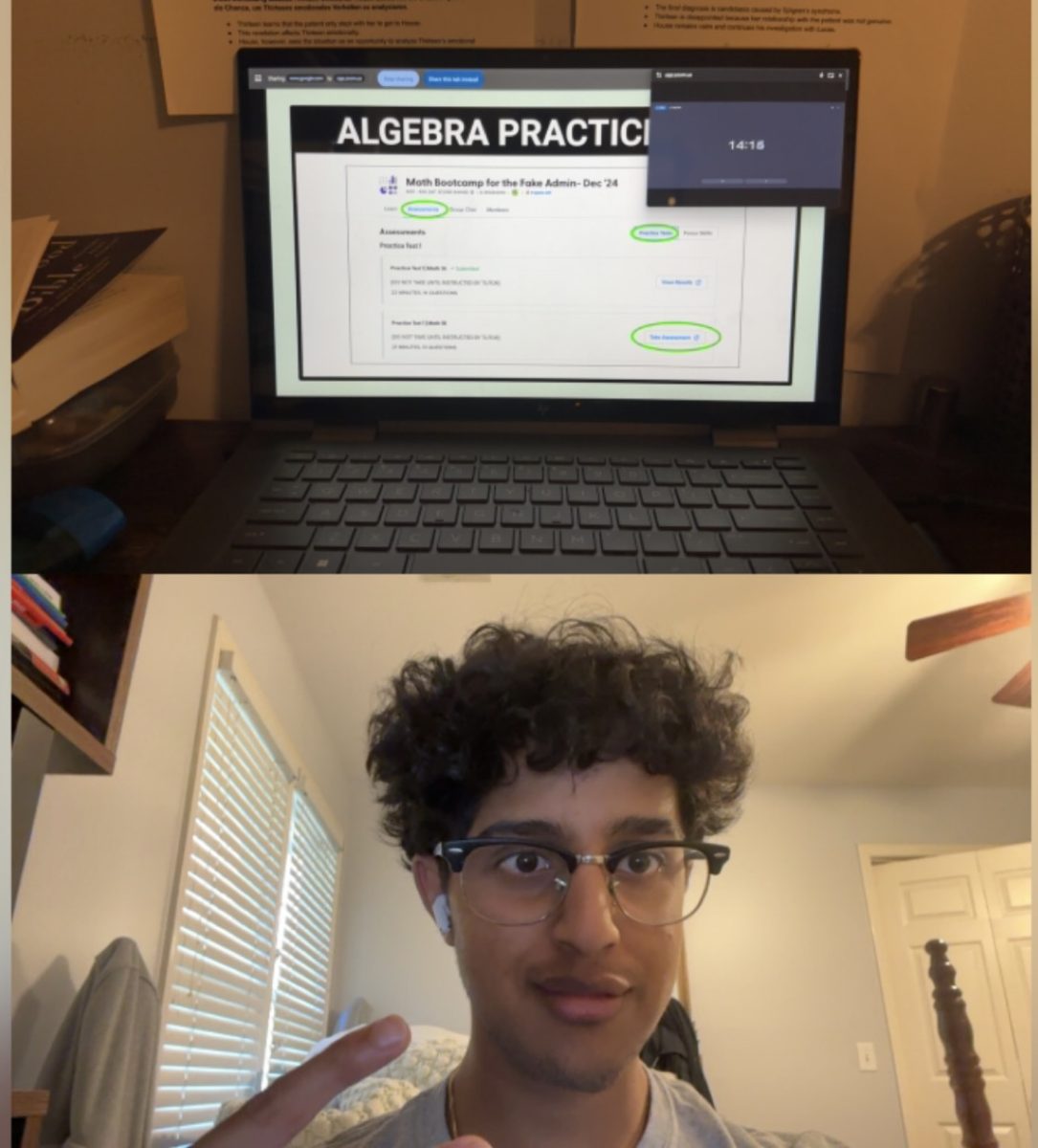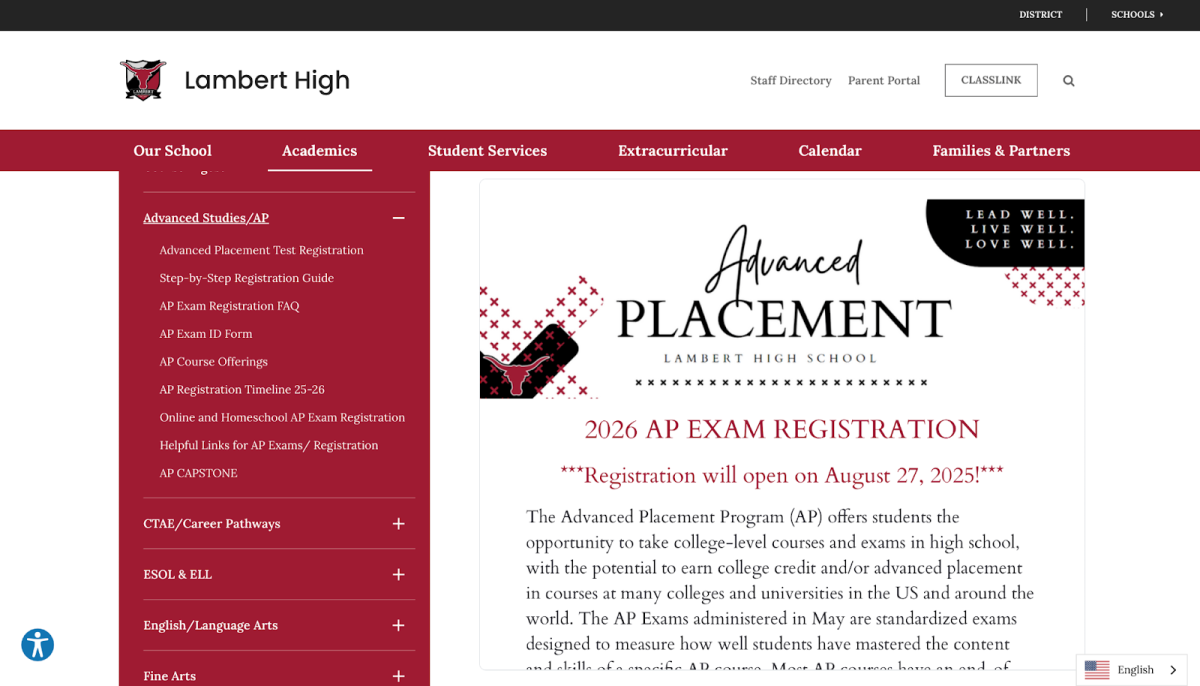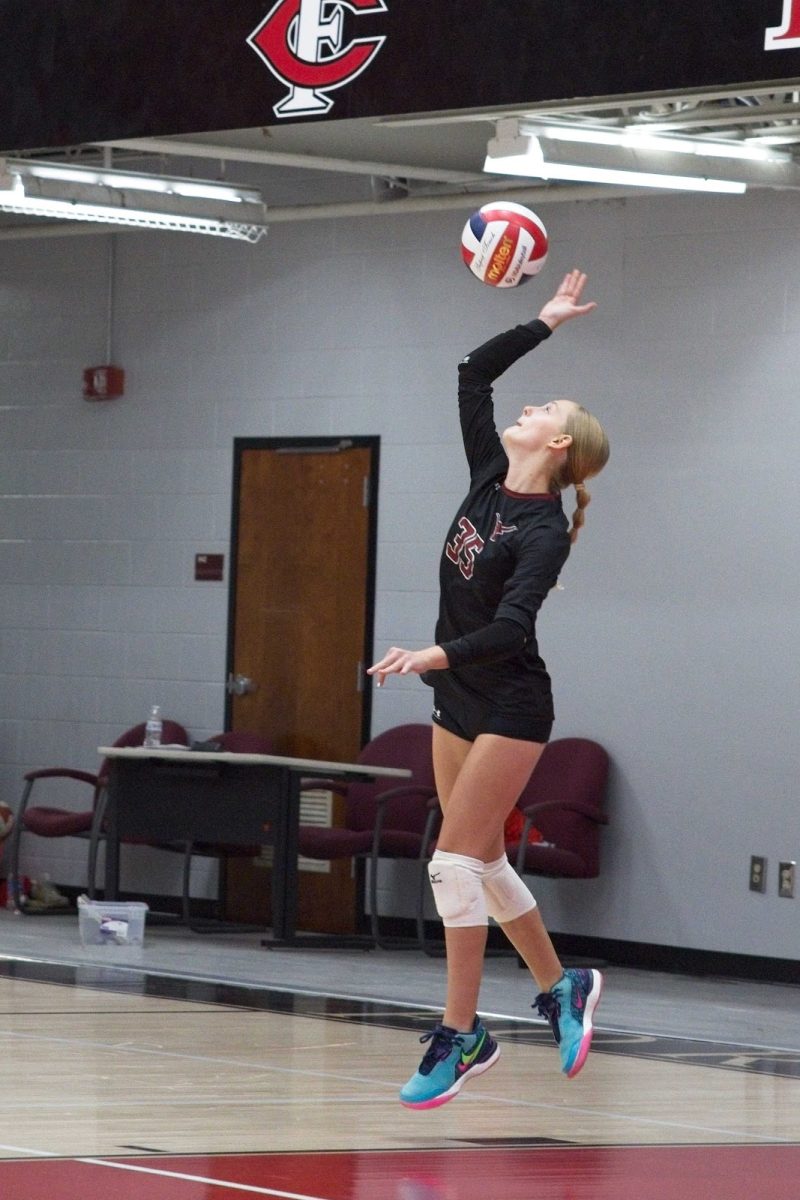Formula 1, often abbreviated as F1, is the pinnacle of motorsport. It captivates the world with its blend of cutting-edge technology, extreme speeds and unmatched drama.
Across seasons, teams and drivers compete for the fastest times in a variety of races to win it all at the highest level of racing. In recent years, the sport has seen a revival as viewership and profits have grown, especially in the United States. But for Lambert students looking to get into the sport, its complicated regulations and terms can prove daunting. As a beginner’s guide, this article will explain the structure of the motorsport and, hopefully, help you understand its appeal.
Basics of F1
Formula 1 is a form of open-wheel racing that takes place on specialized circuits around the world. The term “formula” refers to the set of rules and regulations that all teams and cars must adhere to, ensuring a level playing field. These rules govern aspects such as car design, technical specifications and even team budgets. Founded in 1950, the Formula 1 world championship is managed by the Fédération Internationale de l’Automobile or International Automobile Federation (FIA). The FIA sets the regulations for each season and sanctions the competition.
“It’s the highest class of international racing and it’s the culmination of skill and technological innovation as far as racing goes,” Lambert senior Harshaa Rajarajan explained. “It’s the very limit of speed and agility and that’s what makes it exciting.”
Custom Cars
F1 cars are pinnacles of mechanical engineering, each part created with utmost precision in order to achieve peak racing performance. Costing millions of dollars, each car is typically created for just one season and given continuous upgrades throughout the year. With an open cockpit that holds one driver, F1 cars are designed specifically for aerodynamics and lightweight speed. Among the fastest racing cars in the world, all F1 cars boast top speeds of well over 200 mph and can accelerate to 60 mph in under three seconds.
The cars are typically powered by hybrid power units, which consist of a 1.6-liter V6 turbocharged engine combined with an Energy Recovery System (ERS) that can generate power while braking.
Teams and Drivers
Formula 1 consists of multiple teams, called constructors, each with two drivers. The constructors are responsible for designing, building and maintaining their cars. These teams compete against each other in a championship known as the Constructors Championship. As each leaderboard position from a race awards points, the constructor which accumulates the most wins this title. Currently, there are 10 constructors in the 2023 F1 season. Due to the high cost of running an F1 team, these constructors are typically backed by car companies or other corporate sponsors.
Simultaneously, the drivers compete for the Drivers Championship, which is awarded to the individual driver acquiring the most points. The drivers serve as the true stars of the sport. Through its long history, iconic figures such as Lewis Hamilton and Michael Shumacher have emerged with some drivers winning multiple championships throughout their career.
Season Calendar
Races in F1 are called Grand Prix, coming from the French term for a “great prize.” The season consists of multiple Grands Prix that take place in cities around the world. These events are held on either purpose-built tracks or street race circuits adapted for F1 racing. Iconic races such as the Monaco, British and the Italian Grands Prix are fan favorites. The calendar includes circuits with distinct characteristics, providing a variety of challenges for the teams and drivers. Each course has a different environment for drivers to learn and constructors to adapt to.
Though technically only eight Grands Prix are needed to hold an F1 season, the number of races has been increasing in recent years as more and more cities wish to hold events. The 2023 season featured 22 Grands Prix, though initially 24 were planned and later canceled due to complications. A Grand Prix is roughly every week through the F1 season, which lasts roughly eight months from March to November.
Race Weekend
With each scheduled Grand Prix, fans can expect an event that lasts the entire weekend from Friday to Sunday. On Friday, drivers begin going onto the track in what’s called free practice. This is where drivers have the chance to test their cars on the course, trying out different techniques and developing their strategies for race day. Then, the qualifying race is held once drivers have gotten used to the circuit.
“Qualifying is usually on Saturday, and it’s very important because it determines the starting positions of each of the drivers on race day,” Harshaa stated. “For example, the worst qualifying performance would lead to you starting at the very back of the grid, making it next to impossible to make your way up to the front and get a good position in the grand prix.”
The qualifying race consists of all the drivers on the track trying to get the fastest time possible in order to start higher up for the actual race. Finally, on Sunday, the actual race occurs. Through a set number of laps that changes with each course, drivers simply compete to see who crosses the finish line first.
Although the entire weekend is filled with exciting developments, it’s race day when the excitement peaks. Following the race, points are assigned to the drivers for their final position – placing high naturally correlating to more points. These points then determine the results of the Drivers Championship and Constructors Championship across each team’s two drivers.
Culture of F1
In lieu of many players and teams to root for, as one would find in other sports, F1 features just 20 drivers across 10 constructors. As a result, drivers’ personality is showcased often, many becoming international icons because of it. While some fans root for one particular constructor or driver above the others, F1 can be thoroughly enjoyed without having a specific preference for one over the other.
The drama that surrounds drivers’ personal lives becomes broadcast and integrates itself into the culture of the sport. That means funny moments and memes quickly develop as inside jokes for the fanbase, like driver Carlos Sainz singing along to the song “Smooth Operator” during a race. United by a common passion for racing, fans across the globe find ways to connect with the sport in multiple ways.
“I started watching F1’s youtube channel, paired with Netflix’s Drive to Survive Formula 1 series, and in about a month or two I was caught up with most of the sport,” Harsha explained. “But of course, you can never be fully in touch with F1 until you start watching the races on the weekends.”
The Spectacle
F1 is not just about racing – it’s a global spectacle. The sport has a dedicated fan base, even outside of Lambert, being broadcast worldwide. Fans pack stands, watch from home or even meet up to watch races. As much as it’s about technical regulations and race strategy, F1 is also a social event that brings people together and attracts large crowds to various host cities.
“It’s raw speed and tension, and it’s so well documented that you can really get invested in the sport,” Harshaa added. “As for F1, it’s the easiest to enjoy. It’s thrilling, it’s enticing, and just like football or soccer, you’ll be gripping your seat wondering what’ll happen next.”
Over the course of a race, officials consistently watch for things like penalties, pit stops and race strategy, adding to Grands Prix beyond just who finishes first. This makes F1 unique among other motorsports, allowing for greater interaction as fans look for specific details about each car’s driving style instead of just the pole position.
How to Watch
It’s important to note that even though it involves a lot of rules and mechanical constraints, a deeper understanding of cars isn’t necessarily required to enjoy F1. Simply watching races and having basic knowledge of the season’s structure is enough to become hooked on the motorport. On TV, ABC and ESPN will broadcast races during the 2023 season. For fans, watching races regularly is how one keeps up F1, following each year’s twists and turns.
“I watch races somewhat regularly. They’re usually every Sunday, with Free Practice and Qualifying happening the Friday and Saturday prior to it” Harshaa said. “Of course, life gets in the way sometimes, but luckily race highlights are always posted on the F1 YouTube channel afterwards, so it’s never too late to catch up on happenings within the sport.”
As any fan at Lambert will tell you, F1 is the pinnacle of motorsport – a title it certainly lives up to. Combining cutting edge technology and the world’s best drivers, it proves itself a tier above many other championships. It’s a sport where split-second decisions, intricate engineering and mechanical innovations work together to shave off precious seconds. It can seem daunting at first, but getting into F1 is a uniquely rewarding experience that can introduce Lambert students to a sport that’s unlike anything else broadcast nationally.





















